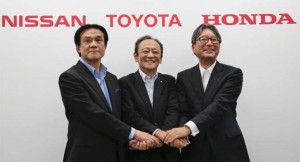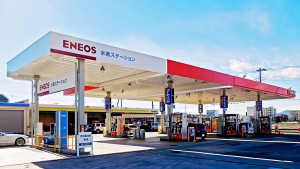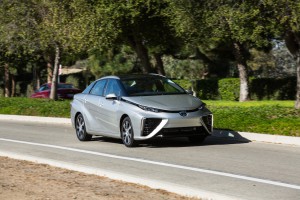In an unusual move, Japan’s three largest automakers have agreed to work tougher to help create what they’re calling a “hydrogen society.”
Toyota Motor Corp. has just launched its new Mirai fuel-cell vehicle, with Honda Motor Co. and Nissan Motor Co. working up similar products. While proponents point out that these vehicles produce no harmful emissions, skeptics note that there are few places for potential buyers to fill their tanks with the lightweight fuel, so the three companies are promising to invest as much as 6 billion yen, or $50 million, to build and support a network of hydrogen filling stations in Japan.
They have also been supporting plans to create a similar infrastructure in the United States where the only ready supply of hydrogen currently is located in Southern California.
Korean carmaker Hyundai has cited the lack of fueling stations as a key roadblock that has limited sales of the Tucson Fuel-Cell Vehicle it launched in the U.S. last year.
(For more on that story, Click Here.)
Automakers around the world have been tinkering with a variety of alternative fuel technologies. And due to the cost and complexity, there already are a number of unusual alliances. Toyota, for example, is involved in a fuel-cell research venture with Ford Motor Co.

Toyota Motor Corp. executive Kiyotaka Ise, center, Nissan Motor Co. executive Hitoshi Kawaguchi, left, and Honda Motor Co., executive Toshihiro Mibe join hands at a Tokyo news conference.
Cooperation is equally important in ensuring there is a supply of hydrogen as fuel-cell vehicles begin rolling into showrooms, so while they might compete on developing the best products, automakers need to cooperate on developing an infrastructure, Nissan executive Hitoshi Kawaguchi said during a joint Tokyo news conference.
Currently Japan has 23 hydrogen stations in operation. The goal is to open up 100s more in the near future. The three automakers collectively pledged to come up with somewhere between 5 billion to 6 billion yen, or $40 million to $50 million, to support that effort – about $90,000 for each station.
Japan is aggressively pushing to reduce its dependence on foreign oil while also cutting smog in cities like Tokyo. It has outlined a plan to showcase hydrogen fuel-cell vehicles as part of the 2020 Tokyo Olympics.
(For more on Japan’s big push for hydrogen, Click Here.)
Toyota has launched sales of its new Mirai hydrogen car and Honda plans to launch a fuel-cell vehicle of its own next year. Nissan is working on a similar model.
The Mirai this week received certification from the U.S. Environmental Protection Agency which rated it at 67 Miles Per Gallon-equivalent, or MPGe, with the vehicle offering a range of 312 miles per tank. Toyota says owners can refuel Mirai in just five minutes – if they can find a source of fuel.
“Just as the Prius introduced hybrid-electric vehicles to millions of customers nearly twenty years ago, the Mirai is now poised to usher in a new era of efficient, hydrogen transportation,” declared Jim Lentz, CEO of Toyota North America.
(Click Here for the latest on the Toyota Mirai.)
Currently, only about 10 hydrogen stations are open to the public in the entire U.S., eight of them in California, but the Golden State government is pressing to expand that number rapidly. In 2013 Gov. Jerry Brown signed a bill into law that will provide $20 million annual to help set up as many as 100 stations across the state.
Last November, Honda announced plans to add $13.8 million of its own to the effort to establish more California hydrogen stations. It is working with FirstElement Fuel which received $27.6 million in additional funding from the state. Toyota also has promised to provide funding to FirstElement.



For those who think they are saving the planet by driving an EV, hydrogen power is the future and it’s here now. Battery powered EVs will just be a sad bad memory in a few years time.
It’s good to see these companies building the infrastructure to support hydrogen refilling. Tax payers should NOT pay for gas stations, EV recharging or exchange stations or hydrogen refilling stations. That is what free enterprise is for if there is a realistic demand for such.